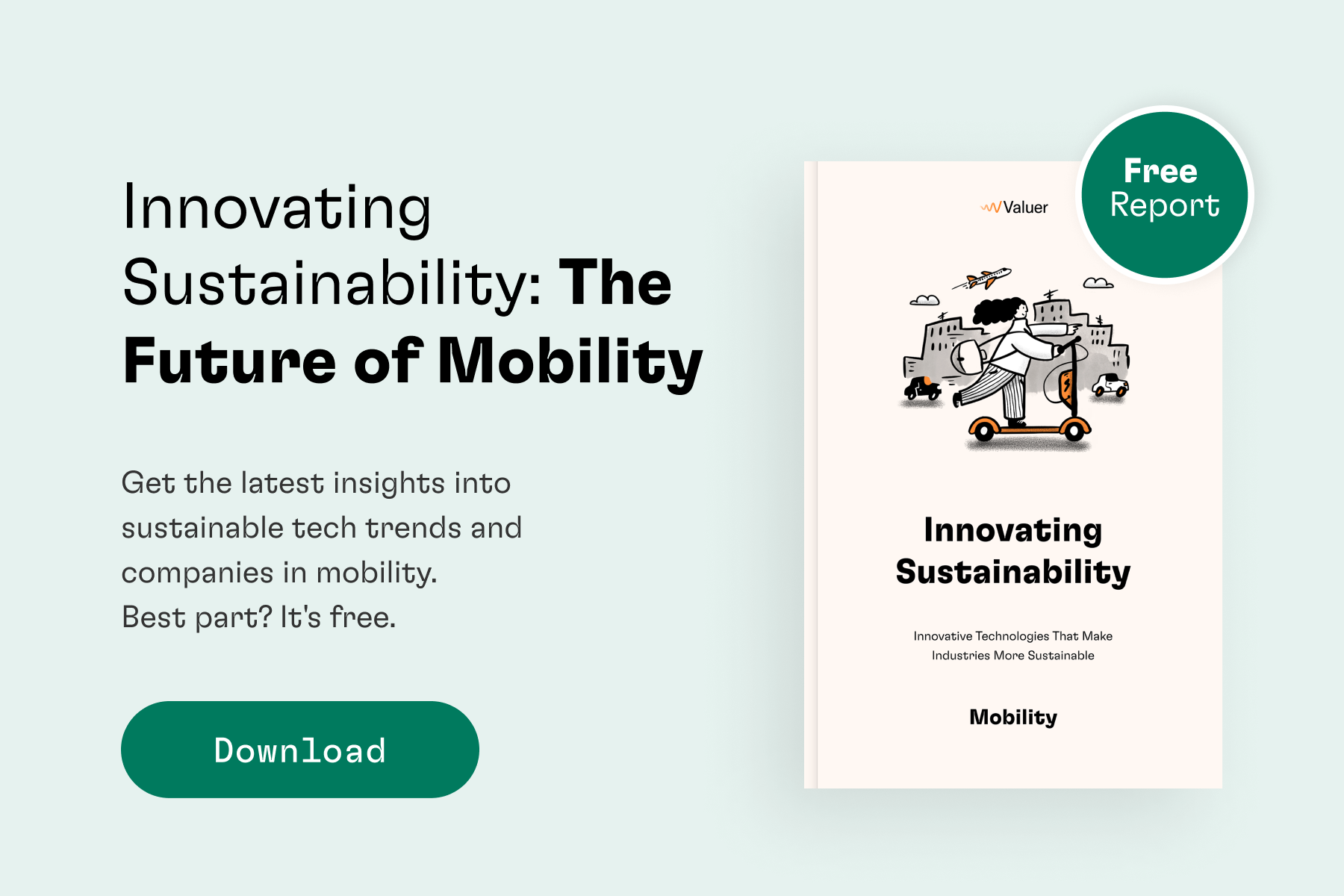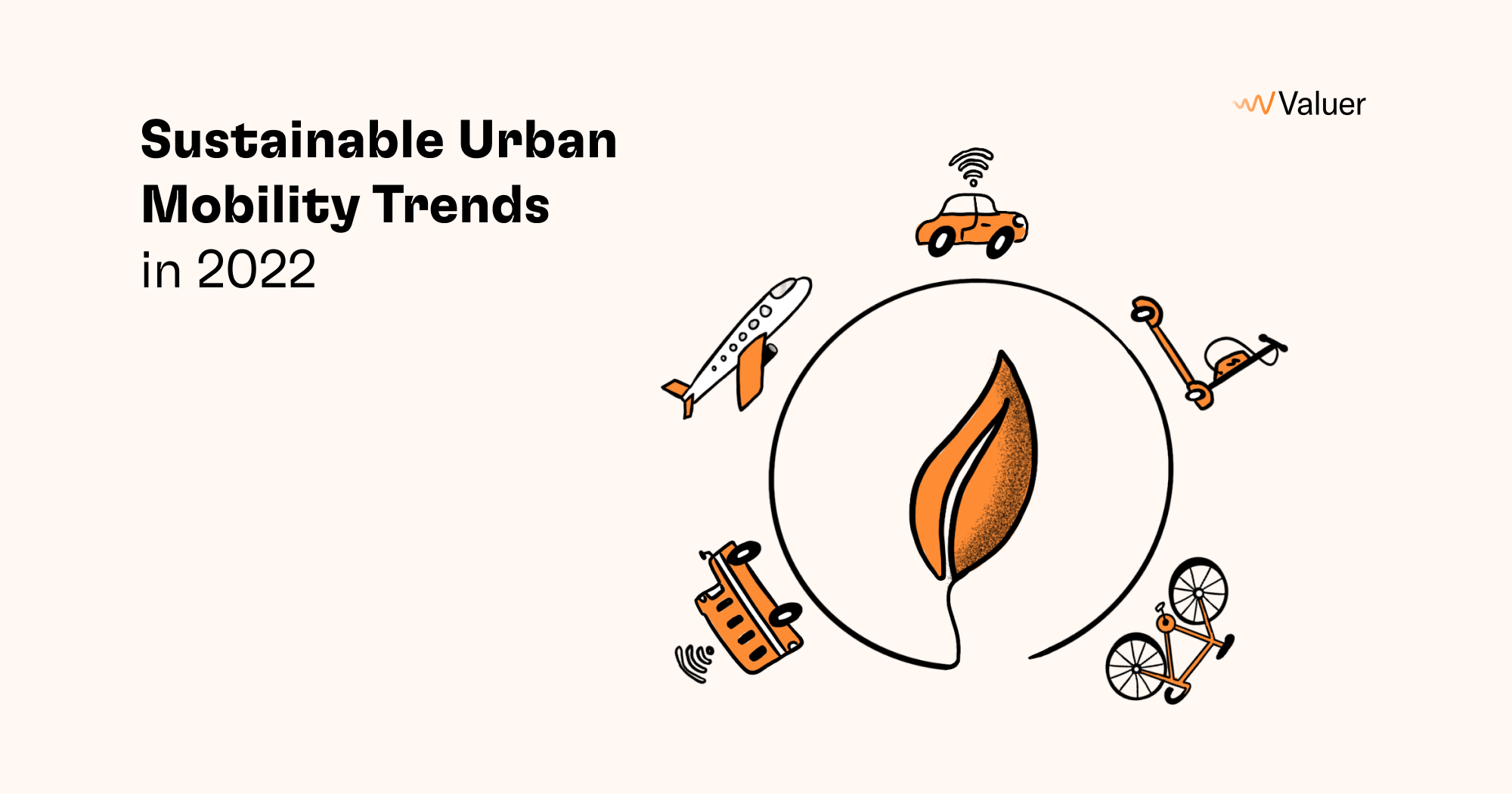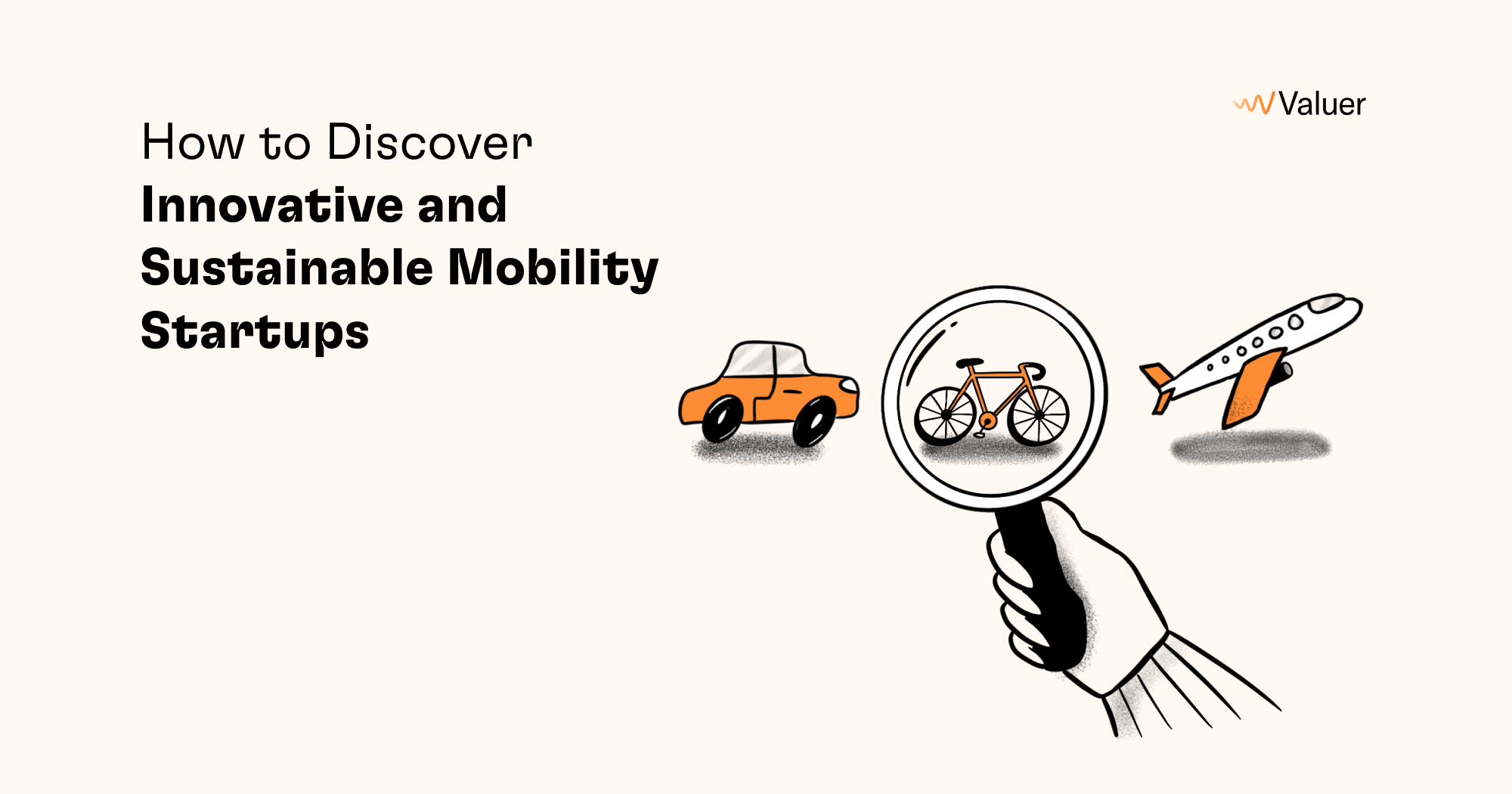Bicycles have been an integral part of city-wide mobility for years, but their electric counterparts have recently entered the picture. In fact, in the last few years, we have also witnessed the growing use of shared and personally-owned scooters and e-scooters, skateboards, and cargo bikes. This means that micro-mobility and the personal transportation devices that fit this category are becoming more integral and widely used by individual passengers in their daily urban commute.
Yet, cars are still the most popular form of travel in many cities around the globe. The problem here is that urban planning has not caught up to the rising populations living and working in cities, which causes congestion and pollution for many who live and work within a metropolitan area.
The aim is that eventually, micro-mobility will take a huge chunk out of car commuters and their pollution and replace it with an infrastructure that’s cheaper, more accessible, and cleaner - in a nutshell, more sustainable. Let us take an in-depth look at how micro-mobility can make urban transport more sustainable and what it will take to implement it in cities around the world.
What is micro-mobility?
To define what micro-mobility is, we need to look beyond individual modes of transport - though they are relevant - and onto a broader picture of the vehicles and logistics that are accessible to the residents within a city or a populated area.
Traditionally, Merriam-Webster defines micro-mobility as the “transportation over short distances provided by lightweight, usually single-person vehicles (such as bicycles and scooters).” Micro-mobility vehicles weigh under 500 kilograms, do not include devices with internal combustion engines, and have a speed range between 25 km/h and 45 km/h.
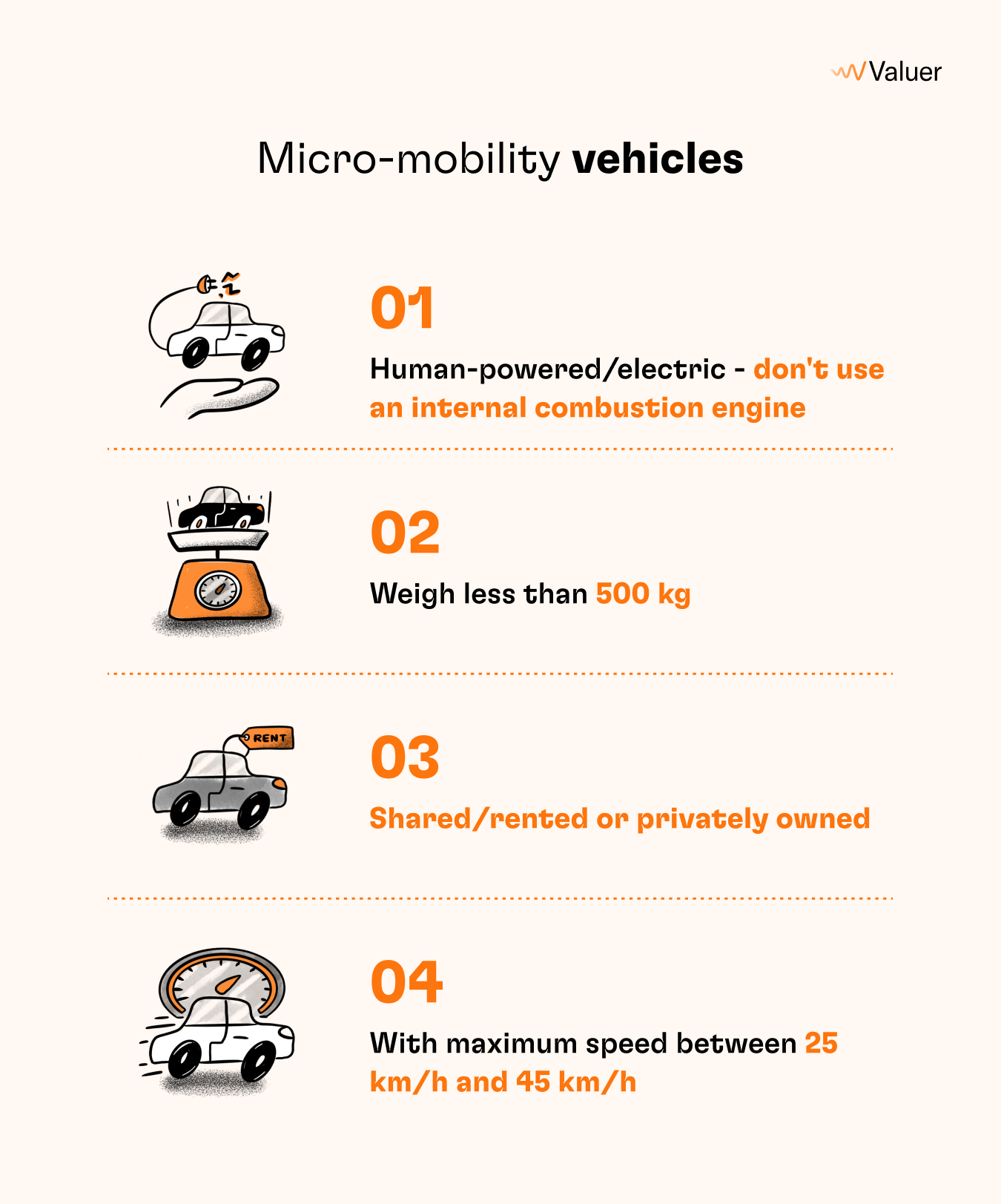
They can be human-powered or electric and shared or privately owned personal transportation devices. Obviously, cars, mopeds, and motorcycles that use combustion engines don’t fit in the category.
But as we said, micro-mobility as a concept goes beyond vehicle requirements. It’s about providing more people with more accessible, versatile, and sustainable modes and logistics of transportation within a community.
Micro-mobility explores how these non-polluting vehicles can be combined with public transport, such as metros, etc., to facilitate and streamline the movement - or mobility - of people within a populated area. In other words, it improves individual movement and gives users easier access to public transportation. However, this brings us to another question…
What is the difference between mobility and transportation?
It may seem like we’re grasping at straws, but there’s actually a significant difference between mobility and transportation. Simply put, while transportation is about moving things and people, mobility is defined around providing access.
[Download our free report - Innovating Sustainability: Transport]
If someone lives on the outskirts of a city where the bus taking them to work comes every hour or so, that’s not really having access - though the transportation is there. Furthermore, if this person instead took a private car to work, that’ll only add to congestion and pollution. And in terms of access, relying solely on cars for individual short-distance travel excludes a part of the population who can’t afford a vehicle.
According to the Mobility Lab:
“So mobility isn’t just having access to one mode of transportation. Mobility is having transportation options, and the quality of those options.”
Their team has come up with three criteria that define quality transportation options that can classify as mobility: time, affordability, and safety. Mobility or accessibility, in this context, means being able to get where you’re going in a reasonable amount of time, for a low cost, and safely.
Again, this indicates that mobility includes logistics. For instance, individuals can use shared electric personal vehicles like scooters for a shorter distance, up to 10km, then take the metro to or closer to their destination, if it’s further away. As you can see, this is why the term used for the concept is micro-mobility rather than micro transport.
The benefits of micro-mobility
An INRIX research from 2019 made some estimates regarding what percent of short-distance trips could be accounted for by micro-mobility vehicles in certain cities in the US, UK, and Germany. According to their findings, shared bikes and scooters could account for up to 50% of short distance (up to 3 miles) trips in the US, 60% in Germany, and 70% in the UK. Though these numbers are an idealistic projection of what could be rather than what is, they show us the potential of micro-mobility, provided there is the right funding, infrastructure, and logistics.
But in addition to accessibility - the constituting property of mobility - there are other very good reasons why micro-mobility is one of the ways that global authorities are striving to reach sustainability goals in urban areas. If we consider that sustainability is made up of environmental, social, and economic factors, we can discern that micro-mobility is indubitably one viable and practical solution to urban transport and personal transportation devices. So let us begin there.
Sustainability
The three main pillars of sustainable development are the environment, economy, and society. Let’s quickly break down these factors to see how micro-mobility can be an asset in building a sustainable future.
[Related Article - Sustainable Urban Mobility Trends in 2022]
Environmental sustainability refers to keeping natural processes and resources in a balanced state without consuming them at a rate that renders them unable to replenish themselves. This is why renewable energy, regenerative agriculture, and electric personal vehicles are frequently discussed topics in sustainability goals.
Economic sustainability means that people around the world would have access to secure sources of livelihood, financial stability, and any other resource they need for their well-being and independence.
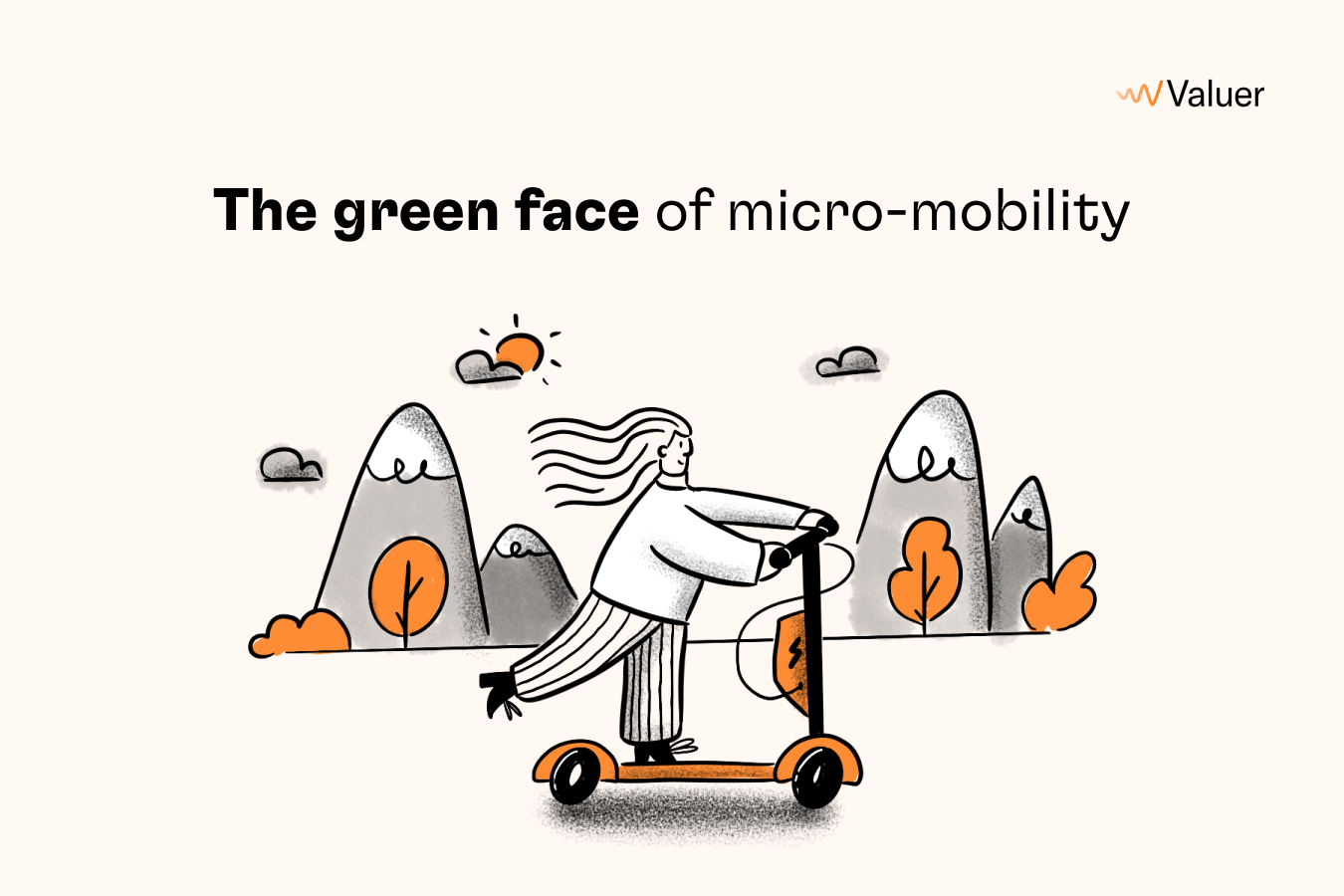
Social sustainability dictates that people’s universal human rights and basic necessities are satisfied and that they have access to resources for their health and well-being. This means personal, cultural, and labor rights and no discrimination on arbitrary bases.
Micro-mobility fits in with all these parameters. It decreases emissions and pollution, which means it’s relatively eco-friendly. Personal transportation vehicles are relatively affordable, whether it’s an electric scooter or a regular bicycle that you can share/rent or own. Here you have economic sustainability - it’s both affordable for the user and boosts local economic activity. Finally, micro-mobility is all about people’s access in urban areas to the entire city and basic needs like traveling to work or hospital, which satisfies the social sustainability standard.
In fact, the same INRIX study we referred to above has shown that the main benefits micro-mobility can offer to city-dwellers are efficient and affordable short-distance travel, reduced emissions and traffic congestion, and finally - promoting and boosting local economies.
Greener, cleaner, less polluted cities
As we’ve already discussed, micro-mobility includes only human-powered and electric transportation. This means less carbon dioxide emissions from cars. Human-powered and electric personal vehicles don’t pollute - in general. Certainly, electric vehicles have zero tailpipe emissions.
The only big question when it comes to electric transportation is: where does the electricity come from? If it comes from a power plant that burns fossil fuels like coal, we’ve only shifted the area that gets polluted. It won’t be this city, but it will be another city or a rural area nearby. So, to quote the Guardian, “electric cars are only as clean as their power supply,” and the same goes for electric personal vehicles.
In any case, fewer cars and internal combustion engine vehicles in general certainly mean fewer emissions within urban areas.
Better infrastructure and logistics
We’ve already shared some examples of what micro-mobility looks like in practice. You get on one of the many personal transportation devices, enter the metro, get off at a place near your destination, and arrive at work without a drop of sweat or a big carbon footprint. This means that micro-mobility at work improves the logistics within an urban area for its inhabitants by making mobility more accessible and affordable.
It also means better infrastructure. Micro-mobility requires safety, so urban areas need to be adapted to facilitate micro-mobility. For example, it means having more bicycle lanes and lanes for electric personal vehicles, like e-bikes and e-scooters.
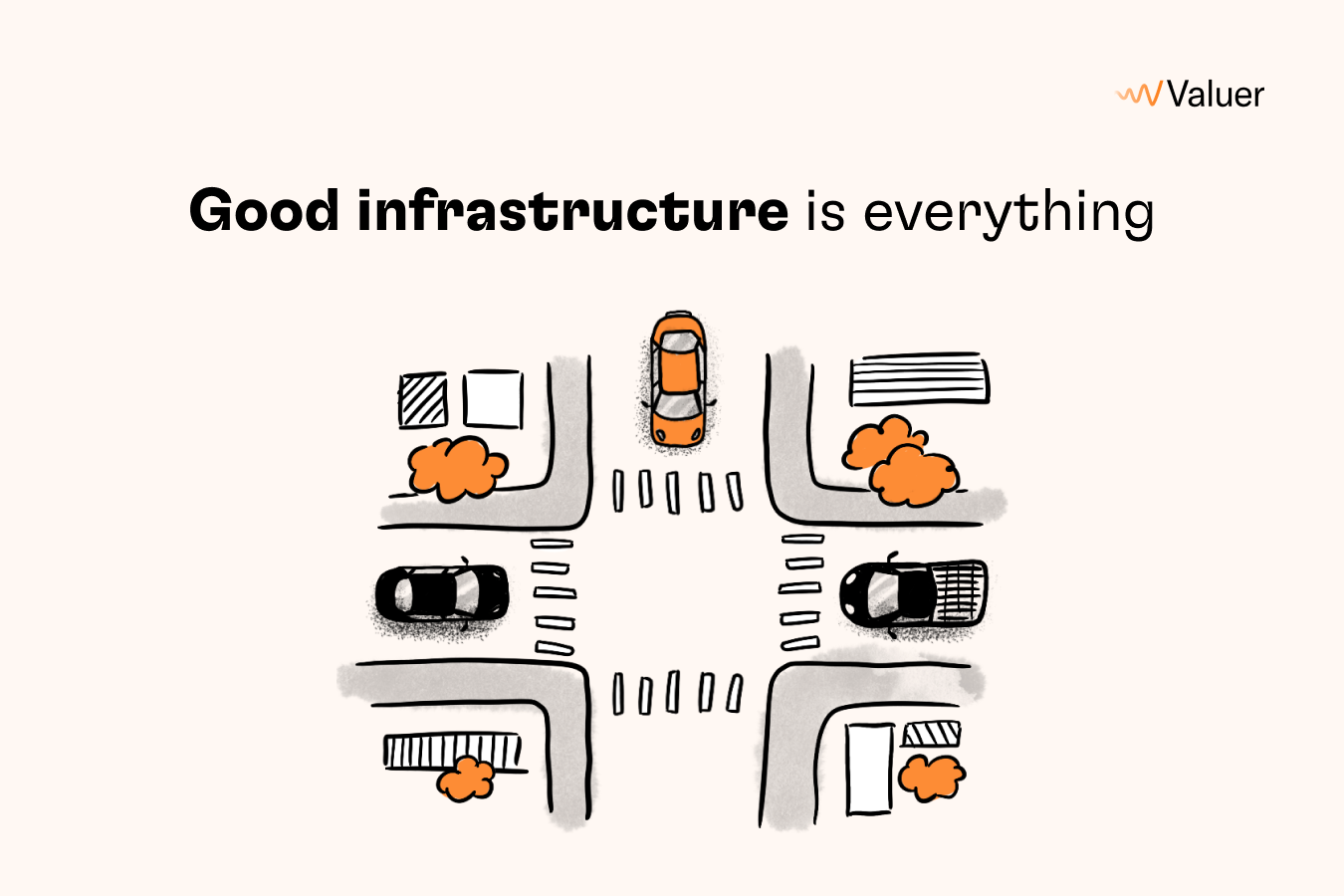
This requires that the city will no longer prioritize the car but rather the safety of the personal-transportation-device user. On top of that, cities will need to install more bicycle racks and assign electric personal vehicle parking spaces, which means less space for cars - and more for green machines. In general, the building of these additional spaces and lanes is much cleaner than that for cars.
It’s important to note that even though it’s simpler than developing entire roads for cars, implementing the right infrastructure for truly functional micro-mobility would take some time and effort on the part of local and federal governments. But we’ll talk more about that when we address the future of micro-mobility.
Less traffic congestion, more freedom of movement
New Yorker Carrie Bradshaw (Character from Sex and the City) only ever entered a metro when her taxi was stuck in traffic. But how is it ever efficient to ride in a taxi in one of the busiest cities in the world? And it’s not just there, we’ve all seen it closer to home– cars as far as the eyes can see. And congested traffic also makes life miserable for pedestrians suffocating in exhaust and cyclists that don’t have their own lanes.
A shift to micro-mobility would mean less congestion and more space for everyone to travel. Personal transportation devices allow the same amount of people to travel the same distances without occupying an entire car.
Affordability
We’ve already been here, but let’s reiterate: micro-mobility is accessible because it’s an affordable, cost-effective option. All the personal transportation devices we’ve talked about - both electric and human-powered - are much cheaper than a car, especially now with the current state of gas prices. Even the parts and the maintenance costs a lot less with micro-mobility personal transportation devices.
An e-scooter user survey in the US found that the main demographic that uses these electric personal vehicles are people between 25 and 34 years of age and people that fall in the lower economic end of the middle-class with annual salaries between $50,000 and $74,000.
What does the future look like for micro-mobility?
Back in April of 2021, Micro-mobility for Europe met with a representative of the POLIS network, a network of European cities that work to promote innovative tech and policies in local transport, to discuss this question: the future of micro-mobility. The main points covered in this meeting were concerned with creating the right infrastructure and shifting urban transport towards a model that facilitates micro-mobility by integrating it into the existing infrastructure, financing for such projects from the EU and local municipalities, and finally, data sharing.
So basically, the future of micro-mobility is still getting its kinks worked out. Any city-wide project is resource-intensive, so a lot of meeting and tinkering will take place before we have any definitive changes on local or global levels. Of course, large European cities are already making huge strides in an effort to become more sustainable by integrating micro-mobility into their infrastructure. And the number of cities enforcing such policies is growing across the world.
But despite the road ahead, micro-mobility is already taking over. In 2021, sales of e-bikes grew by an astounding 240%. Other than the increased popularity of electric personal vehicles, we believe - and so does TechCrunch - that ride-sharing, AI, and IoT are some trends that will paint the future of micro-mobility starting as soon as this year.
After all, we can always get excited about a sustainable practice becoming a popular trend.
.png?width=103&height=103&name=Untitled_Artwork%20725%20(2).png)
